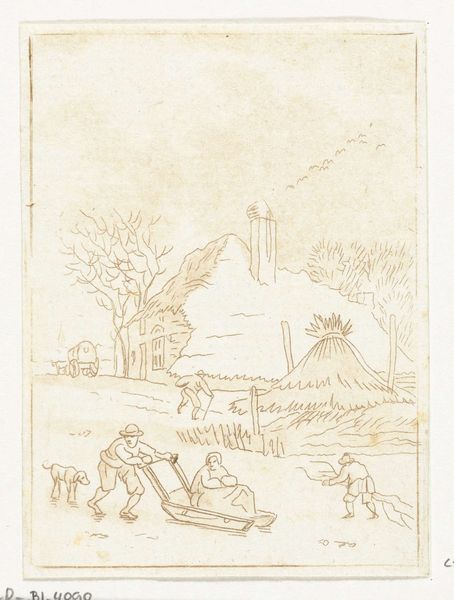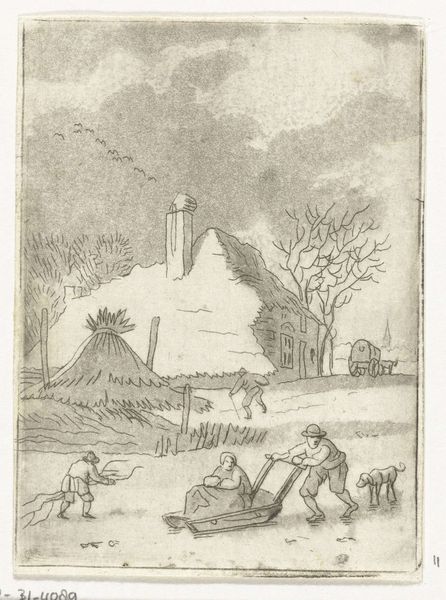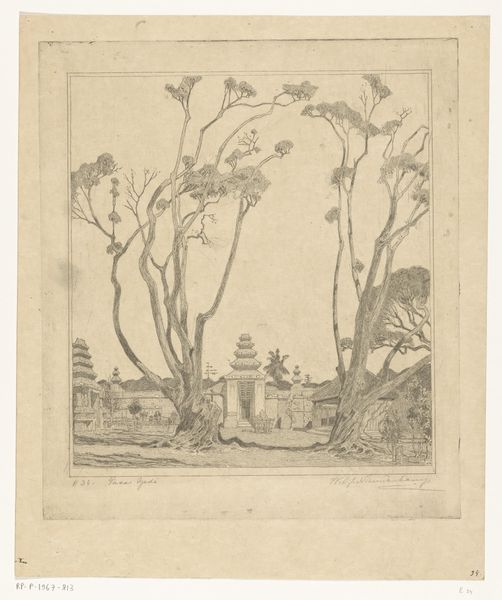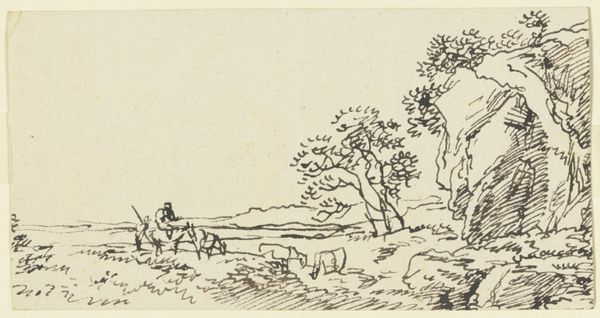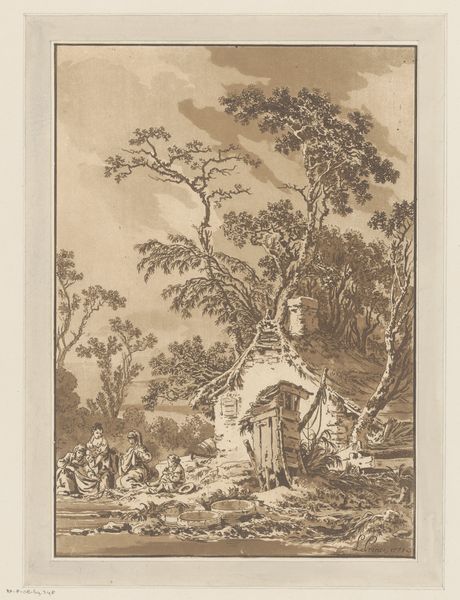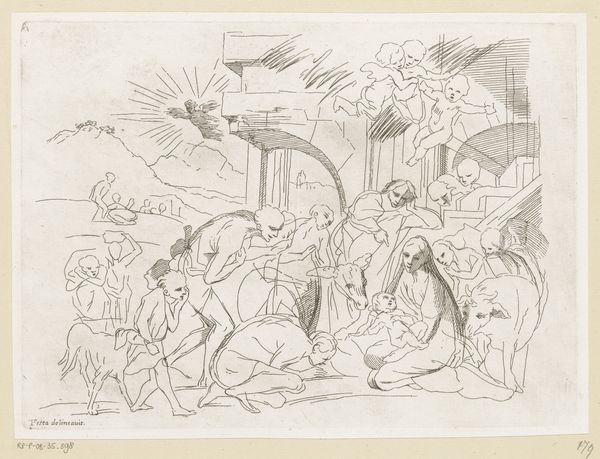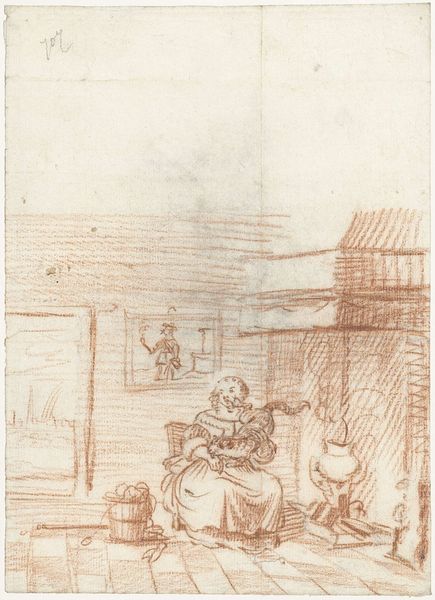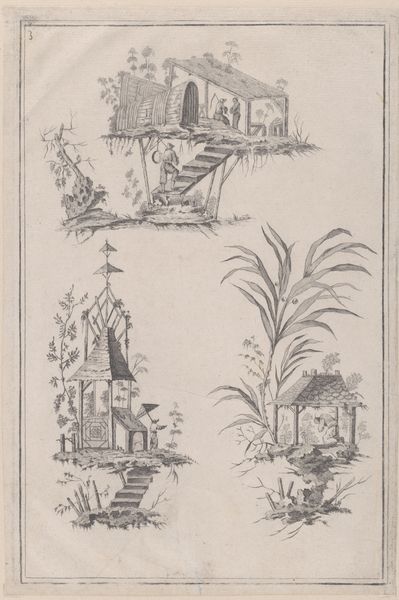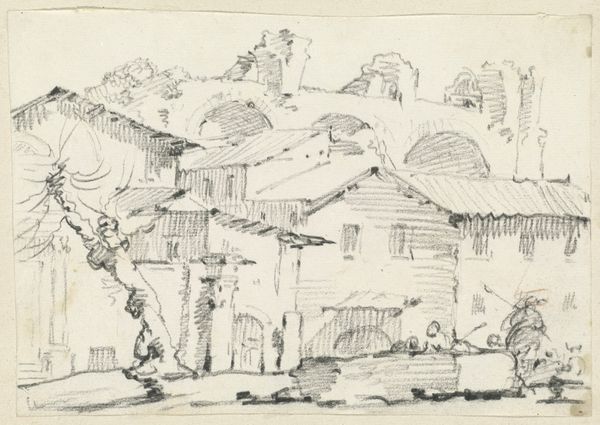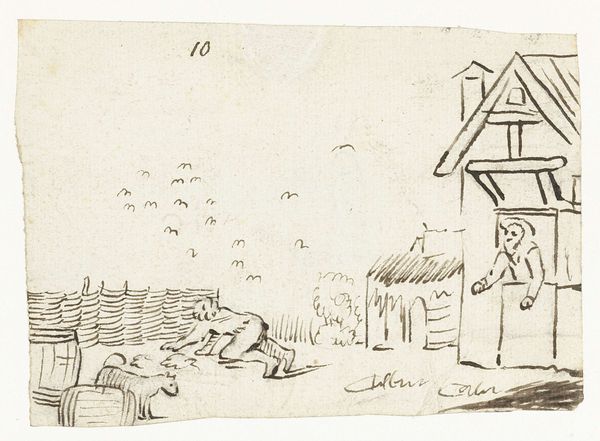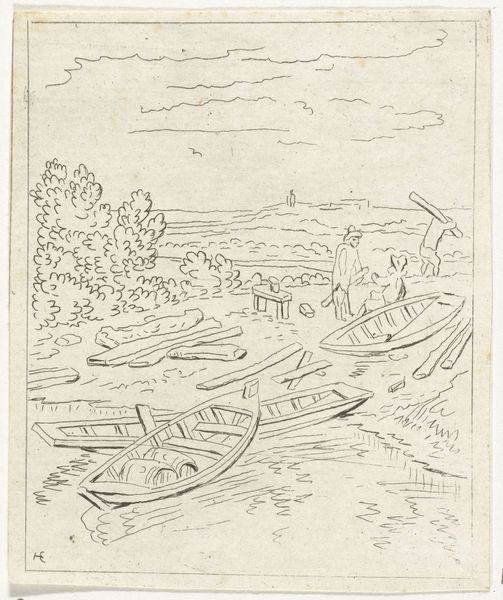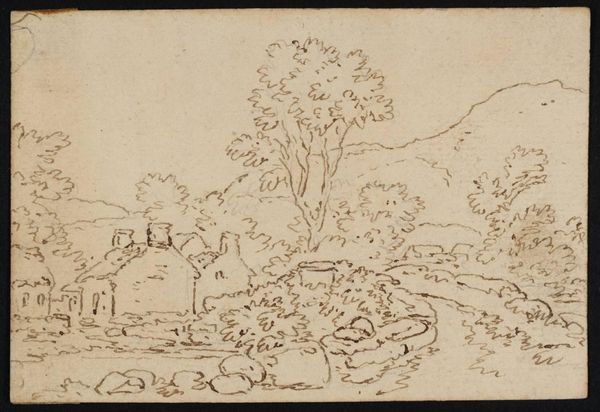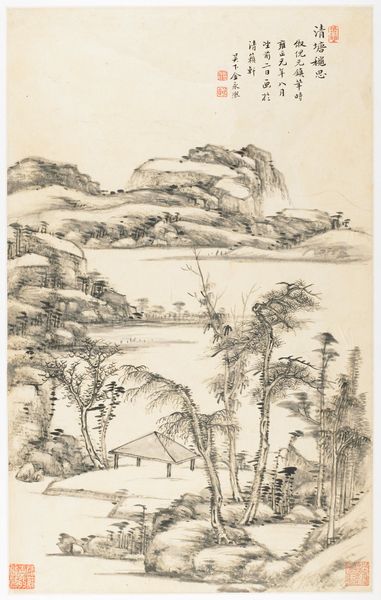
drawing, ink, pen
#
drawing
#
pen sketch
#
landscape
#
ink
#
pen
#
genre-painting
#
realism
Dimensions: height 88 mm, width 65 mm
Copyright: Rijks Museum: Open Domain
Curator: Let’s discuss “Winterlandschap met ijsvermaak,” or “Winter Landscape with Ice Fun,” a drawing attributed to Anthonie van den Bos, created sometime between 1778 and 1838. It’s currently held at the Rijksmuseum. Editor: The pen and ink lends such a stark and bare feeling. It's immediate, but spare. Like a half-remembered dream of winter. There’s an emptiness, even with the figures present. Curator: I'm immediately drawn to the materials. The relative ease and availability of pen and ink, suggest the democratizing influence on art creation. Van den Bos uses this accessibility to depict a slice of everyday life, collapsing any boundary between the artistic and the mundane. Editor: Look at how the bare branches echo the lines of the thatch roof. These visual rhymes pull your eye around, yet that high horizon still leaves a space for...something unknown. What did ice mean to this culture? Did it connect to death or carnival, abundance or privation? Curator: It prompts considering this work as less of a direct mirror of life but as a commodity itself, embedded within a network of artistic production and exchange. Consider who would have had access to purchase such work. Its value, tied directly to van den Bos' labor. Editor: Note the detail in the buildings compared to the simplified forms of the figures skating, trudging. Is the house representing established societal structures, contrasting with the fluid, fleeting nature of play and leisure on the ice? A sort of emblem of solidity against transience? Curator: I can’t ignore the depiction of labor; the individual pushing a sled burdened with another, alongside another figure harvesting…something in the foreground. Editor: The recurring image of the sled perhaps implies a shared cultural understanding about mutual help during winter, and in harsher times people relying on others and their symbolic resources for survival. What's more Dutch than mutual aid in a frigid climate? Curator: Ultimately, "Winterlandschap met ijsvermaak" asks us to consider art not as rarefied inspiration, but the result of labor that holds up a social and material history. Editor: And to recognize, beneath its unassuming presentation, symbols layered with enduring resonance. This work reveals more than it initially suggests.
Comments
No comments
Be the first to comment and join the conversation on the ultimate creative platform.
